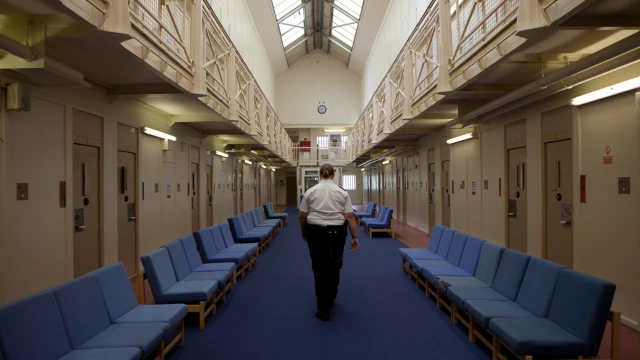The United Kingdom’s criminal justice system encompasses a broad array of institutions, varying in purpose, inmate profiles, and security levels. These prisons, spanning both public and private sectors, are primarily distinguished by their inmate populations.
The system goes beyond a basic division of male, female, and juvenile prison facility, classifying prisoners according to the risk they pose to society and each other. Let’s delve deeper into the different types of prison in the UK, the categorisation of prisoners, and the distinct features of local and dispersal prisons.
Local Prisons vs Dispersal Prisons
At the outset, you’ll encounter a split between local and dispersal prisons. Following your sentencing, you’ll initially be sent to a local prison, typically near the court where your trial was held (you do not get a choice on which prison that is). This is where your initial assessment takes place.
For those serving shorter sentences (typically under 4 years), the entire duration may be spent in a local prison. However, for longer sentences, prisoners are typically transferred to a dispersal prison, where they will serve the majority of their sentence. There’s minimal differentiation between these types in terms of the operational regime or the opportunities for work and education they offer, but are different in terms of prison population as the vast majority of prisoners will have longer prison sentences for high severity crimes.
A Look at the Categories
The categorisation of prisons in the UK is a testament to the country’s efforts in prioritising both public safety and offender rehabilitation. Prisons for adult males are classified as A, B, C, and D, each corresponding to varying levels of security and different types of inmates. A separate classification exists for female prisons and Young Offender Institutions:
Category A Prisons
Considered the highest level of security, Category A prisons house the most dangerous and high-risk individuals within the UK prison system. These facilities are designed to contain prisoners who have committed high value or violent crimes whose escape would pose a severe threat to the police, the public, or the State’s security.
Category A prisons are equipped with the most stringent security measures as a result of this. These features comprise of comprehensive surveillance systems, high walls, multiple security barriers, and extensive prison officer to prisoner ratios.
Category B Prisons
Category B prisons accommodate prisoners who don’t require the highest level of security, but still necessitate substantial measures to prevent escape. These facilities house individuals who might still pose a risk to public safety, although not as grave as Category A inmates.
Category B prisons have robust security protocols, yet with less intensity than Category A institutions. This balance ensures inmates’ containment while offering a greater focus on rehabilitative activities.
Category C Prisons
Category C prisons cater to inmates who, while not trustworthy in open conditions, are unlikely to attempt escape. Security is necessary in these facilities, yet the emphasis shifts more towards rehabilitation.
Category C institutions often provide various programs aimed at equipping prisoners with skills, education, and the necessary support to reintegrate into society after serving their sentences.
Category D Prisons (Open Prisons)
Category D prisons, also known as open prisons, provide the least restrictive environment within the prison system of the UK and are generally reserved for those convicted of minor offences. These institutions are created for prisoners who are assessed to have a low risk to the public and are deemed reliable enough to follow the rules without close supervision.
The regime in open prisons encourages responsible behaviour and social reintegration by allowing inmates to undertake work, pursue education, and even make regular visits to their homes.
Female Prisons
The classification system for female inmates in the UK differs from their male counterparts. Instead of being divided into Categories A to D, female prisons are classified as either closed or open. Closed prisons house the majority of female prisoners, including those who might pose a risk to the public. Open prisons, on the other hand, accommodate lower-risk prisoners nearing the end of their sentences and those eligible for open conditions. These facilities reflect the generally lower overall security risk of the female inmate population while continuing to prioritise rehabilitation and reintegration.
The categorisation of UK prisons allows for a tiered approach to offender management, aligning the security level with the risk posed by the individual. By understanding these classifications, we get a clearer picture of the stratified nature of the UK prison system and its underlying philosophy of balancing forms of punishment with rehabilitation.
Young Offender Institutions
Young Offender Institutions (YOIs) are a crucial component of the UK’s penal system, housing young people aged between 15 and 21. These correctional facilities are tailored to address the unique needs of young offenders, combining aspects of custody with an increased focus on education, training, and personal development.
Structure and Security
Similar to adult prisons, YOIs vary in security levels, largely based on the seriousness of the offences committed by the young inmates and the risk they pose to the public and to each other. These establishments employ a range of security measures, although the emphasis is more on creating a safe, supportive environment that encourages personal development and behavioural change.
Educational and Training Regimes
A distinguishing characteristic of YOIs is their commitment to reducing reoffending through education and training programs. These initiatives aim to provide young offenders with the skills and qualifications they may lack, thereby increasing their chances of successful reintegration into society upon release.
The curriculum in YOIs encompasses basic education – including literacy, numeracy, and IT skills – and vocational training in various fields, such as construction, catering, and horticulture. In some cases, young inmates may also have the opportunity to work towards recognised qualifications, like GCSEs or NVQs.
Rehabilitation and Support Services
Beyond education and training, YOIs offer a host of support services tailored to the needs of young people. These can include substance misuse programmes, mental illness support or psychiatric facilities, and personal development workshops covering topics like anger management, social skills, and conflict resolution. Some YOIs also provide offending behaviour programmes, designed to help young people understand the impact of their actions and make more positive choices in the future.
Transitional Assistance
Finally, YOIs play an essential role in assisting young offenders in their transition back into the community. This can involve help with finding accommodation, accessing further education or employment, and connecting with community-based support services. The ultimate goal is to provide young people with a fresh start and a clearer pathway towards a crime-free life.
Progression through Categories and Recategorisation
The progression of an inmate through these categories is not a linear process. It can vary significantly based on a variety of factors. The nature of your crime is one of these; for instance, violent or drug-related crimes may result in a slower progression due to the perceived risk to society.
Your behaviour in prison also plays a pivotal role. Good conduct, including following rules and participating in available programmes, can contribute positively to your progression through the categories. Demonstrating personal growth and an understanding of the consequences of your actions may speed up this process.
Moreover, adherence to prison rules and regulations is paramount. Disregard for these norms can not only hinder your progression but may even lead to a higher security classification.
In the UK prison system, your category is not a fixed label. It is regularly reviewed in relation to your behaviour, participation in rehabilitation programmes, and any changes in your risk profile. As you approach the end of your sentence, the prison authorities may reassess your risk level, leading to potential recategorisation to a lower risk category. This shift aims to facilitate your transition back into society, making the last part of your sentence progressively less restrictive.
However, it’s worth noting that if your sentence is relatively short – typically under 2 years – you may remain a Cat B prisoner for the entire duration. The prison system may decide not to progress you down the risk categories. This is due to the short duration of your sentence and the perceived risk and resource implications associated with recategorisation. In such situations, seeking advice from a legal professional is highly recommended. They can provide guidance on possible next steps and any measures that could influence your categorisation.
The UK’s prison system, characterised by a diverse range of prison types and prisoner categories, seeks to create a balance between ensuring public safety and the critical task of rehabilitation. This complex system strives to manage prisoners in a way that is proportionate to their individual risk level and encourages prison reformers. By understanding these classifications, we gain not just a clearer picture of the prison system’s inner workings, but also a greater appreciation of its efforts to reintegrate rehabilitated offenders back into society. This deepens our understanding of the justice system’s function – to protect, penalise, but also to pave the way for positive change.







